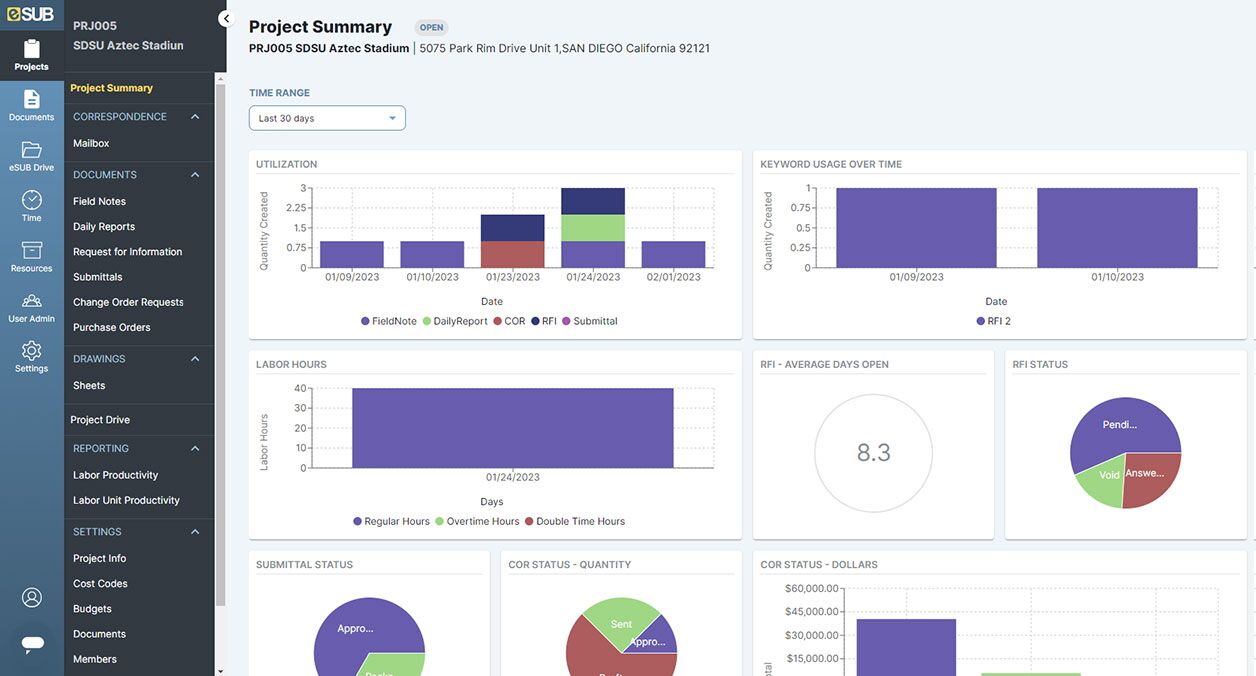Construction Project Management Software: Optimizing Operations and Performance
Advanced Building Monitoring Software Application: Enhancing Productivity and Cooperation in the Industry
In a market where accuracy and performance are extremely important, the combination of advanced building and construction monitoring software application has actually changed the way tasks are intended, performed, and checked. By offering real-time project monitoring abilities, improved resource allowance functions, and smooth interaction platforms, these software solutions have actually become crucial tools for building and construction experts aiming to raise their productivity and foster stronger synergy.
Advantages of Advanced Building Software
The use of innovative building and construction software substantially improves performance and task results within the building sector. Via functions like automated organizing, real-time cooperation devices, and information analytics, project supervisors can a lot more efficiently strategy, track, and display job development.
In addition, progressed building software aids improve interaction and cooperation amongst job stakeholders. With streamlined platforms for sharing task files, tracking modifications, and interacting updates, teams can work much more cohesively towards usual task goals. This cultivates far better decision-making, lowers the likelihood of mistakes, and boosts general project high quality.
Moreover, progressed construction software program provides understandings through data analytics that can aid recognize fads, optimize processes, and mitigate risks. By leveraging data-driven intelligence, construction companies can make more enlightened decisions, adapt to altering task dynamics, and inevitably drive better task results. In general, the advantages of advanced building software program are critical in boosting performance, cooperation, and job success within the construction industry.
Real-Time Job Monitoring Abilities
With the seamless integration of real-time task monitoring abilities, construction groups can efficiently keep track of progress, boost decision-making, and make sure task timelines are fulfilled. Real-time task tracking allows stakeholders to accessibility up-to-date information on various aspects of the building and construction project, including task completion status, resource allocation, and prospective traffic jams. This degree of openness fosters partnership among group participants, subcontractors, and customers, leading to enhanced communication and quicker issue resolution.
Furthermore, real-time project tracking provides job supervisors with the essential information to make informed decisions without delay. By having instant access to crucial performance indicators and task metrics, supervisors can recognize issues beforehand, implement rehabilitative measures, and maximize job operations. This positive technique aids in protecting against hold-ups, minimizing prices, and eventually boosting overall task effectiveness.

Boosted Resource Allocation Functions
Utilizing innovative resource allocation tools simplifies building and construction task monitoring processes and enhances labor force effectiveness. These attributes enable task managers to appoint jobs, devices, and products with accuracy, ensuring that resources are made use of successfully (evolve construction). By having a central system that provides real-time visibility right into resource availability and demands, building and construction teams can make enlightened decisions immediately, staying clear of hold-ups and price overruns
Improved source allocation functions likewise facilitate better partnership amongst group participants. With clear assignments and transparent source distribution, every private comprehends their duty and responsibilities, promoting team effort and responsibility. This causes boosted communication and coordination, ultimately enhancing performance and project results.

Improved Communication Systems
Enhancing communication systems in construction management software program greatly enhances job sychronisation and performance. By integrating attributes such as real-time messaging, file sharing, and job jobs, groups can team up seamlessly despite their physical places. With boosted interaction systems, stakeholders can receive immediate updates, share essential files, and go over project information without delays, resulting in find quicker decision-making processes.
Additionally, these sophisticated interaction devices permit much better transparency and accountability within building and construction jobs. Employee can track development, offer comments, and address concerns promptly, fostering a much more collective and productive job environment. Furthermore, having systematized communication channels within the construction monitoring software application minimizes the threat of miscommunication and makes certain that all staff member are on the same web page.
Improving Workflows for Performance
Effective operations streamlining is important in maximizing efficiency within building and construction administration software application systems. By applying structured operations, building and construction firms can eliminate traffic jams, reduce errors, and guarantee that tasks progress smoothly from beginning to complete. One way to attain this is by automating repeated jobs such as task scheduling, resource allotment, and progress monitoring. Automation not just conserves time but also minimizes the danger of human mistake, leading to more efficient job distribution. evolve construction.
Furthermore, incorporating various aspects of project administration, such as budgeting, file monitoring, and communication, into a single system can even more improve workflows. This integration permits real-time cooperation and data sharing amongst employee, getting rid of the demand for manual information access and ensuring that everyone is collaborating with one of the most up-to-date information.

Verdict
In verdict, progressed building administration software program uses many advantages such as real-time task tracking, enhanced resource appropriation, improved communication systems, and structured operations. Overall, progressed building software plays a vital role in boosting effectiveness and success in construction projects.